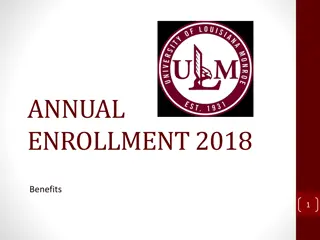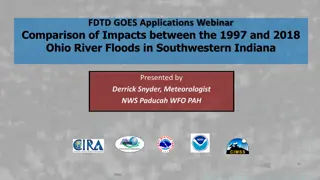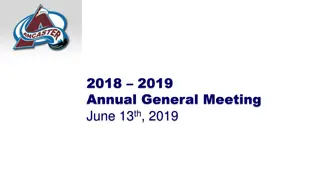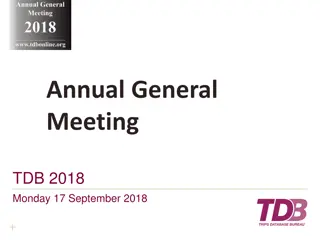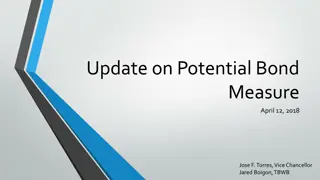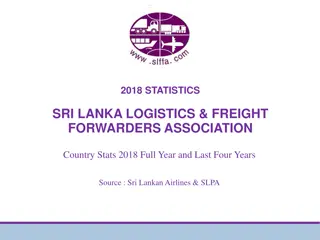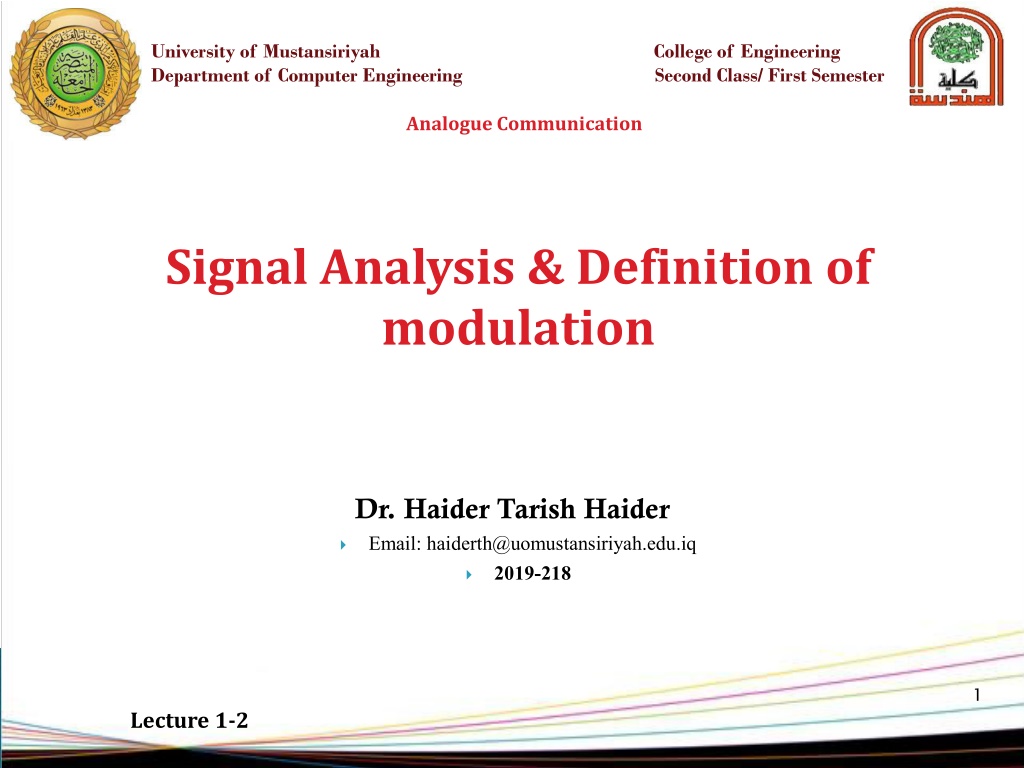
Signal Analysis and Modulation in Analogue Communication
Understand signal analysis and the definition of modulation in analogue communication. Learn about different types of signals, signal properties, spectrum analysis, and examples of signal representations. Explore the concepts through lectures and examples provided by Dr. Haider Tarish Haider at the University of Mustansiriyah.
Download Presentation

Please find below an Image/Link to download the presentation.
The content on the website is provided AS IS for your information and personal use only. It may not be sold, licensed, or shared on other websites without obtaining consent from the author. If you encounter any issues during the download, it is possible that the publisher has removed the file from their server.
You are allowed to download the files provided on this website for personal or commercial use, subject to the condition that they are used lawfully. All files are the property of their respective owners.
The content on the website is provided AS IS for your information and personal use only. It may not be sold, licensed, or shared on other websites without obtaining consent from the author.
E N D
Presentation Transcript
University of Mustansiriyah College of Engineering Department of Computer Engineering Second Class/ First Semester Analogue Communication Signal Analysis & Definition of modulation Dr. Haider Tarish Haider Email: haiderth@uomustansiriyah.edu.iq 2019-218 1 Lecture 1-2
Signal Analysis The signals can be classified into the following types: Deterministic and Random: which can be expressed mathematically as a function of time (f(t)=t2 ) other signals is random or noise signals. Periodic and Non periodic (Aperiodic): which can be repeated itself after a fixed length of time (i.e. f(t)=f(t+T), for - < t< ). Periodic function Non periodic function 2 Lecture 1-2
Examples of Signals 1- Impules (Dirac): ? ? = , ? = 0 0 , ????? ??? Prosperities: ? ? ?? = 1 ? ? ? ? ?? = ?(0) ? ? ? ? ?0?? = ?(?0) 2-Unite Step: u t = 1, ? 0 ? < 0 0, 3 Lecture 1-2
3-Signum function 1, 0, 1, ? < 0 ? > 0 ? = 0 sgn t = Signal Spectrum Thespectrum is the frequency domain description of a signal. Fourier series and transform is one of the fundamental methods the represent the signals in frequency domain. ? ? ? ????? Forward transform ? ? = ? ? ?????? inverse transform 1 ? ? = 2? 4 Lecture 1-2
Spectrum of sinusoidal signal. f(t)=A cos(w0t+ ), we can write cos ? =???+ ? ?? sin ? =???+ ? ?? , 2 2? A = + jWct jWct ( ) ( ) f t e e 2 Single side spectrum -Two side spectrum 5 Lecture 1-2
Example: find the spectrum (single and double sided) of the signal ? ? = ? ????? ???? ?? + ????(?????) Solution: we can rewrite f(t) in cosin form ? ? = ???????? + ????? ????? ??? + ????(????? ??) A Method of Translation: A signal may be translated to a new spectral range be multiplying the signal with an auxiliary sinusoidal wave form. Let the signal be a sinusoidal waveform 6 Lecture 1-2
A w 2 = = + jWmt jWmt = m= , Am = constant amplitude, m ( ) cos ( ) v t A w t e e fm freq m m m 2 Am/2 1 f/Hz fm -fm f m Two-side spectrum Am Single-Side spectrum f/Hz fm 7 Lecture 1-2
A = = + jWct jWct c Consider the auxiliary signal. cos ( ) v A w t e e c c c 2 Ac = constant amplitude fc= frequency Multiplication of vm(t) and vc(t) will result in vm(t) vc(t)= (Am coswmt) (Ac coswct) AmAc = + + [cos( ) cos( ) ] w w t w w t c m c m 2 The amplitude spectrum of the product is -(fc+fm) -fc -(fc-fm) fc-fm fc fc+fm e + A A + + = + + ( ) ( ) ( ) ( ) j wc wm t j wc wm t j wc wm t j wc wm t m c e e e 4 8 Lecture 1-2
Note: It may be seen that the original spectral lines have been translated both in the positive and negative frequency direction by the amount fc. The message signal of finite energy and non- periodic, it may be represented in freq. domain by its Fourier Transform. Let the signal m(t) be band limited to the freq. range zero to wm its Fourier Transform M(w) is as shown. cos The spectrum resulting when m(t) is multiplied by wc t (Ac=1) (w ) M Bw=wm jwt Is F(m(t) cos wct)= ( ( ) cos ) m t w t e dt c wm -wm 0 1 1 + + ( ) ( ) j w wc t j w wc t ( ) ( ) m t e dt m t e dt 2 2 1 1 = + + ( ) ( ) M w wc M w wc 2 2 9 Lecture 1-2
F(m(t)coswct) Bw=2wm -wc-wm -wc -wc+wm wc-wm wc wc+wm USB- upper side band Spectral components above the auxiliary signal (wc wc + wm) LSB- lower sideband Spectral components below the auxiliary signal (wc- wm wc) 10 Lecture 1-2
Elements of a Communication System Source i/p transducer Transmitter Communication channel Receiver O/P Destination transducer i/p message i/p signal Transmitted signal Receive signal i/p signal i/p message noise Source: information sources such as human voice, machine of message, TV, or data. Transducer: The input transducer converts the message to (a signal) an electric signal (voltage or current). Similarly; the O/P transducer at the destination converts the O/P signal to the appropriate message form. Transmitter: The transmitter coupled i/p massage signal to the channel for effective and efficient transformation. Several signal processing operation may be perform by the transmitter such as amplification filtering and modulation. 11 Lecture 1-2
Modulation: it's a process design to match the properties of the transmitted signal to the channel. Transmission channel: The channel provides the electrical connection between the information source and the user (receiver). The channel may have different forms. Wires or cables: telephone lines, power lines, Space (wireless). Optical fiber. Water. Earth. Regard less of channel type; it degrades the transmitted signal in a number of ways. Attenuation: reduction of signal strength with distance. Distortion: signal alteration due to imperfect channel response. Interference: contamination by extraneous signals of a form similar to the desired of a form similar to the desired signal Noise: Random and unpredictable electric signal form natural causes both internal and external to the system. 12 Lecture 1-2
Receiver: The function of the receiver is to extract the desired signal from the degraded version of the transmitted signal coming from the channel this is performed through the process of demodulations. Signal- to-Noise Ratio (SNR): The ratio of the signal power (S) to the noise power (N). ? ? or ??? ?? = 10log ? ? ??? = Bandwidth (B): is the frequency range occupied by a modulated carrier signal Types of Communication Systems: Communication system can be divided in the three categories, based on the type of modulation used and the nature of the information source: Analog communication systems. Digital communication systems. Hybrid communication systems. 13 Lecture 1-2
Analog signal transmission: For purpose of analysis analog signal transmission defines the transmission of: arbitrary, finite energy low pass signals over a given channel. In some cases, the signal will be a single sinusoidal tone or power signal. f(t)= coswmt Low- pass channel: baseband communication Channel need Band pass channel: broad band comm Modulation Note: The majority of practical channels have band pass characteristics and modulation is necessary for translating the low pass signal spectrum to match the band pass channel c/c. 14 Lecture 1-2
Type of modulation: According to carrier wave: 1- Continuous Wave (CW) modulation:The carrier is a sinusoidal wave form at a freq. much higher than any of the freq. components continue in the modulating signal (the amplitude, frequency, phase or combination) is altered of the carrier in accordions with the information to be transmitted. Amplitude modulation: AM, Double-Side Band (DSB), Single Side Band SSB, etc. Angle modulation: Frequency Modulation (FM), Phase Modulation (PM). 2- Pulse Modulation (PM): a. Pulse amplitude mod. b. Pulse duration (width) mod. c. Pulse position mod. Note: The carrier is a periodic trans. of pulses. 15 Lecture 1-2
According to message: 1- Analog modulation. 2- Digital coded modulation. Pulse code modulation (PCM) Note: Regardless type of modulation it must be a reversible process. Reasons for modulation: 1- Modulation for ease of radiation: Audio signal 100Hz 3000 Hz For efficient radiation of the 100Hz component c 2 10 PCM Analog signal Digital signal 8 3 10 * = = = 6 3 10 * m f Required antenna length = 3*105 m = 300km, for direct radiation (impractical) 10 2- Modulation to reduce noise & interference. 3- Modulation for frequency assignment. 16 Lecture 1-2
4- Modulation for multiplexing - Long distance telephone. - FM stereo 5- Modulation to overcome equipment limitation. 17 Lecture 1-2
Q & A Q & A Thank You Thank You 18









